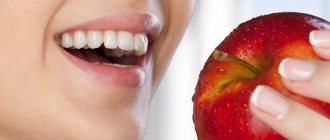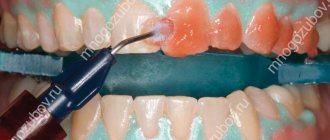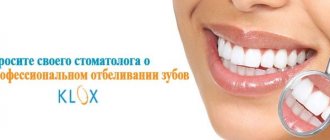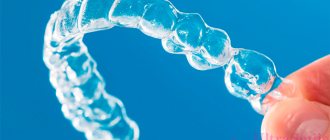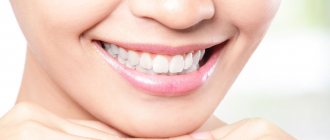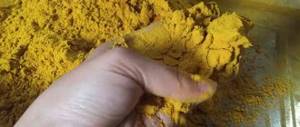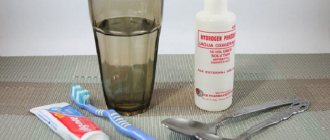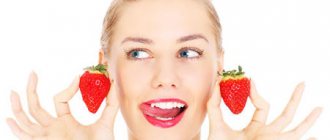Allowed white diet foods
Foods that can be eaten during the diet:
- Dairy
- Seafood and white fish meat.
- Chicken and rabbit.
- Vegetables: celery, potatoes, white beans, asparagus, cauliflower.
- Fruits: apples, pears, bananas.
- Walnuts.
- Rice and other cereals.
- Tofu cheese.
- White mushrooms.
- Eggs (whites).
- Bread and pasta, manufactured and wholemeal flour.
Red wine
Red wine contains tannins and chromogens that stain teeth. And the coloring effect of polyphenols, plant pigments, only enhances the effect.
Startsmile tip:
Red wine can always be replaced with white or rose, which, by the way, the French love very much. Or use a good whitening paste after drinking from the line of proven home whitening products Blanx, Global White and.
Prohibited foods on the white diet
Foods that are prohibited to eat during the white diet:
- Drinks that contain caffeine: black and green tea, Coca-Cola, coffee, Red Bull.
- Drinks and products containing cocoa: dark and milk chocolate, instant cocoa.
- Vegetables: beets, eggplants, tomatoes, peppers, pumpkin and carrots.
- Products containing coloring pigments: juice, wine, ice cream, candy.
- Berries: strawberries, bird cherry, black currant, blueberry, blueberry, honeysuckle.
- Spices: paprika, basil, turmeric, saffron, curry.
- Fruits: oranges, grapefruits, melon, mango, pomegranate, cherries, plums, dark grapes, cherries.
Which products are safe
Dentists recommend consuming foods that are not only safe, but also healthy for your teeth. It is advisable to include foods containing minerals (calcium and fluorine) as well as vitamins (A, EC) into your daily diet. Quick fastening of the enamel will allow you to quickly return to your usual diet and favorite dishes.
Experts determine the main list of foods that can be eaten after teeth whitening at the dentist:
- any dairy products that do not contain dyes or coloring fillers;
- fruits and vegetables of dull colors;
- natural seafood;
- poultry and egg whites;
- pasta, cereals and potatoes;
- any cabbage, with the exception of red cabbage;
- bakery products;
- celery or asparagus (steamed).
When following a white diet after teeth whitening, the list of acceptable foods includes all those foods that do not have a coloring effect.
It is recommended to adhere to these particular products in order to avoid not only staining, but also damage to the enamel. Weakened enamel can react to sour, salty and spicy foods, which will “eat away” the unprotected enamel, thus provoking the development of infectious or inflammatory processes. It is also not advisable to consume rough food to prevent damage to the surface of the teeth.
White diet menu for 7 days
| Days | Breakfast | Snack | Dinner | Dinner |
| 1 and 4 | Oatmeal with milk, cottage cheese, raisins, fermented baked milk | Yogurt, krag, banana | Two boiled eggs, green tea with milk, cottage cheese with sour cream | Pear, yogurt |
| 2 and 5 | Rice porridge with honey, green milk tea, yogurt | Peach, yogurt | Cheesecakes with milk | Creamy ice cream, banana |
| 3 and 6 | Cabbage stewed with sour cream, milk | Plum, fermented baked milk | Oatmeal with honey, green milk tea | Salad with eggs, cheese and sour cream, milk |
| 7 | Rice pudding, kefir | Cottage cheese with prunes and sour cream | Steamed fish, cabbage salad, potatoes, milk | Apple and banana puree |
Lollipops and candies
If candy, chewing gum or ice cream stains your tongue, you can be sure that your teeth will too.
Startsmile tip:
Choose chewing gum that is sugar-free and sweet without artificial colors. To effectively fight bacteria, it is also recommended to use an ultrasonic toothbrush and an oral irrigator. The device significantly improves the quality of oral hygiene and has a beneficial effect on soft tissues. From a wide range of models, it is not easy to understand which irrigator is best to choose, however, you can find a device that is suitable in terms of functionality and price.
Pros and cons of the white diet
Pros of the white milk diet:
- Thanks to the diet, you can maintain the results obtained during the teeth whitening procedure for a long time.
- During the diet, fat deposits will disappear, as fatty foods are removed from the menu.
- The products that a person consumes during a diet meet the principles of proper nutrition. They do not contain sugar, acid, harmful chemical additives or dyes.
Cons of the dairy diet:
- Not everyone can withstand the diet; failures are possible on it.
- Since some foods are excluded from the menu during the diet, the body may lack a number of nutrients.
Tea
According to recent studies, not only black tea, but also green, white and herbal tea can stain teeth to varying degrees. Remember the brownish rim on a mug that remains after drinking tea.
Startsmile tip:
Give preference to lightly brewed green or white teas. Try not to consume the drink very hot - high temperature will only enhance the effect of pigments. If you do not want to give up black tea and coffee, then to maintain white teeth it is recommended to use one, which is convenient to carry and can be used without a toothbrush.
How long should you diet?
The first two days after bleaching, the diet should be followed very strictly. However, this is not bad at all, since at the same time you can get rid of several kilograms of excess weight. During this time, you should not eat foods that contain at least a minimum set of coloring pigments.
After 2 days, you can drink coloring drinks, but only through a straw. You need to eat this way for 1-2 weeks. If you follow these recommendations, the enamel is guaranteed not to darken or stain. If the diet rules have been violated, you must immediately brush your teeth.
What foods are not advisable to eat?
Particular attention is paid to the list of what patients should not eat after teeth whitening. Limitations are associated with increased tooth sensitivity and the risk of enamel staining.
During the white diet, the following are excluded from the diet:
- any tea, except white;
- coffee drinks and cocoa;
- brightly colored sauces;
- drinks made from vegetables or fruits;
- fruits and berries with rich color;
- all citrus fruits and sour berries;
- dragees, lollipops, chocolate, jam;
- egg yolk.
Dentists also advise you to independently monitor the consumption of products containing dyes. To do this, you can even study the composition of the product on the packaging before purchasing it.
General recommendations from experts
General recommendations that must be followed after undergoing a teeth whitening procedure:
- You should avoid using toothpaste that contains a large amount of acid.
- After eating, you need to brush your teeth, even without using toothpaste.
- It is necessary to ensure that plaque does not form on the teeth, so they should be brushed with special care.
- To prevent food particles from remaining between your teeth, you need to use dental floss.
- It is good to use a fluoride balm to rinse your mouth.
- You should choose a lipstick that is not bright, but one that does not leave marks on your teeth.
- At least for 24 hours after the teeth whitening procedure, you should give up cigarettes. The resins contained in tobacco smoke penetrate fragile enamel and quickly change its color.
The influence of bad habits
Changing your diet with these minor adjustments for just two weeks is easy for many people. It is much more difficult to change your habits.
Bad habits such as smoking and drinking alcohol have a negative impact on teeth. It is necessary to give up smoking completely, since a snow-white, beautiful smile and nicotine are incompatible.
With alcohol, indulgences are permissible, since it is only necessary to categorically refuse drinks containing any types of dyes. But since modern alcoholic drinks (with the exception of clear ones) mostly contain coloring substances, the list of permitted alcohol is insignificant.
Contraindications
The diet should not be followed by people who are intolerant to the foods included in its composition. It should not be practiced by women carrying a child, children, or the elderly. Patients who suffer from chronic diseases of the digestive system should abandon the diet. To ensure that the diet does not cause harm to the body, you need to consult a doctor before starting it to identify possible contraindications. If they are not there, then you can practice the diet. In addition to keeping tooth enamel snow-white, a person will be able to lose weight.
Berries
The rich color of the pulp and skin of blueberries, blueberries, black currants, cherries, cranberries, grapes, blackberries and raspberries stains teeth, giving them the characteristic shade inherent in berries.
Startsmile tip:
Berries are very good for health, so you shouldn’t give them up. Rinsing your mouth after eating with a special whitening rinse will help neutralize the effect of coloring pigments.
List of foods that can and should be included in the diet
Each person may have their own “white” diet. For example, you can prepare different dishes using the list of products suggested by doctors as a basis:
- whey, curdled milk, kefir, milk and cottage cheese, butter, yoghurts: they should not contain colored fillers, because now many fermented milk products contain various additives,
- cheeses,
- all types of fish and seafood,
- bananas, green apples and pears, avocados, apricots: in general, you can eat different fruits, but it is undesirable to eat red ones, as well as those that contain a large amount of acid, which can have an irritating effect on the enamel. Before eating, fruits, especially apples, can be baked to release the acid.
- chicken, turkey,
- cucumbers, zucchini, green peppers,
- cabbage: white, cauliflower. You can also eat Brussels sprouts, but only boiled and steamed.
- chicken and quail eggs: white only,
- potato,
- porcini mushrooms and champignons,
- pasta,
- cereals: semolina, rice, pearl barley, oatmeal,
- marshmallows, white marshmallows, white ice cream,
- wheat bread,
- mineral water.
Clinical researches
An analysis of the clinical effectiveness of the use of various therapeutic and prophylactic agents of the Asepta series, carried out in Novosibirsk, at the State Budgetary Educational Institution of Higher Professional Education "Novosibirsk State University", confirmed that the line is different:
- Pronounced hygienic;
- Anti-inflammatory;
- Hemostatic property.
The study examined the effect of the products on the oral health of adolescents, patients with the most sensitive tissues. The use of pastes, balm with propolis and rinse demonstrated an improvement in clinical indicators and confirmed high efficiency in the treatment of periodontal pathology in patients of different ages.
Not only color matters, but also other properties of products
It is important to monitor not only the color, but also the consistency, as well as the temperature of the food and drinks you eat. The dishes on your table should not be too hard, cold or hot. It is necessary to avoid sudden changes in temperature, for example, when drinking hot coffee after cold ice cream. It is necessary to exclude spicy, salty, and sour foods (for example, citrus fruits) from the diet, as all of them can cause pain and discomfort.
On a note! Fermented milk products must be present in the daily menu, since they do not have a pronounced color and contain a large amount of calcium, which is necessary to strengthen hard tissues and increase their resistance to various irritants.
Preferred cooking methods: steamed, baked in the oven, stewed without adding fat. You can season food with regular salt and white pepper, but it’s better to leave all other spices for later.
Consequences of not dieting
If you refuse to follow a “white” diet and include foods and drinks with dyes in your diet, this will lead to the formation of a yellow or dark pigmented plaque on the enamel. Your teeth will not look as well-groomed, snow-white and beautiful as they did immediately after whitening. Essentially, you will be wasting your time and money.
If you eat cold and hot foods, as well as sour and spicy foods immediately after lightening the enamel, the hard tissues will react with pain and may become damaged and crack. Moreover, you will increase the risk of getting erosion and caries.
Why do teeth become sensitive after whitening?
In the first days after the procedure, the enamel will be more sensitive; minor pain and reaction to temperature stimuli may occur. This is a completely normal phenomenon, since the teeth were exposed to aggressive external influences. However, there should not be acute pain - this situation indicates that the doctor chose the wrong dosage of the active substance.
Even the safest and gentlest whitening methods still have a negative effect on the enamel, destroying its mineral composition. Therefore, it is necessary to introduce healthy foods into the diet (see the list below), as well as use various preparations that will strengthen your teeth - in pharmacies you can purchase special pastes or compositions that are applied to the teeth for a few minutes.
Should I use home whitening products?
It is advisable to use homemade compositions to preserve the whitening results for a long time. But these should not be folk remedies, but professional ones, selected by your dentist. It is necessary to start using such compositions no earlier than 3 months after the professional procedure. It is better if the same system is used that was used in the clinic - for example, ZOOM or Amazing White - these brands provide formulations for use at home. But for this you will need to make individual mouth guards in which the active gel will be placed.
Whitening at home is especially effective for maintaining results after a professional procedure.
